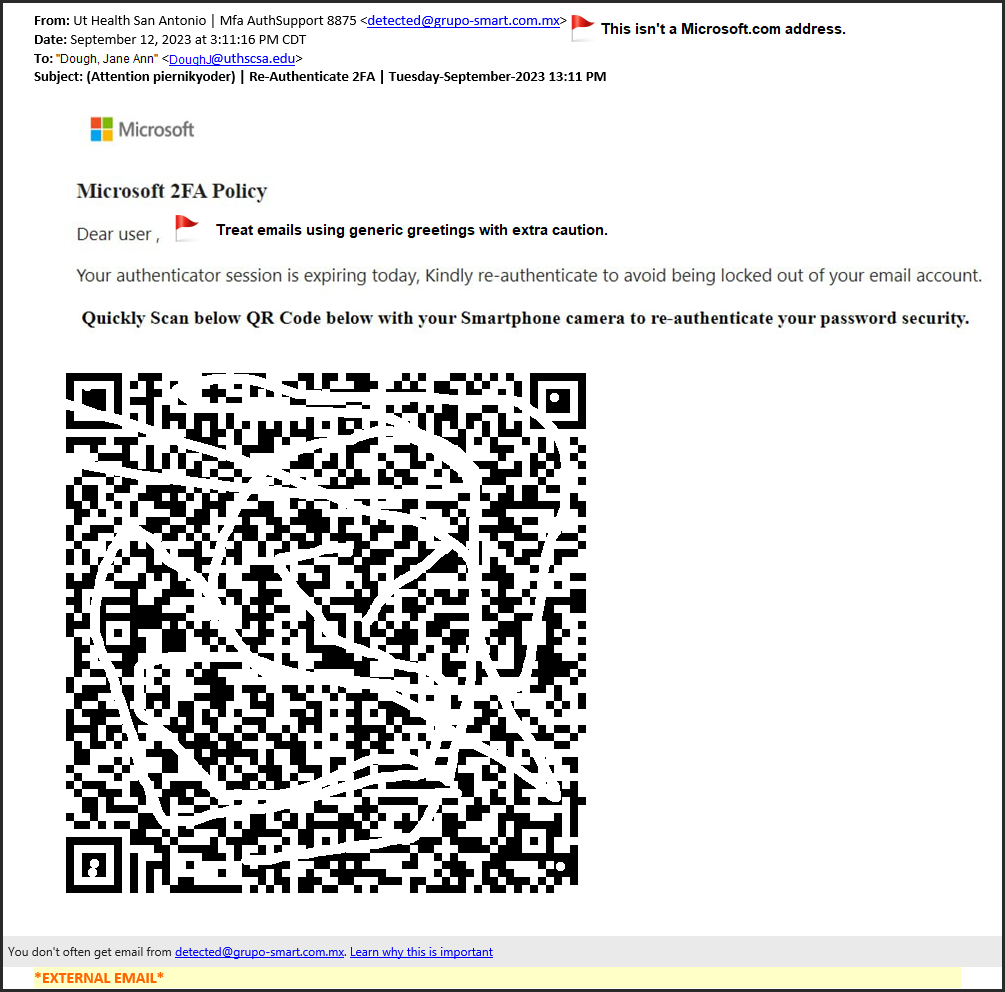Re-Authenticate 2FA
This email below has been confirmed as malicious or fraudulent by the Information Security department. If you have received this phishing email, do not open any attachments or follow the link(s) in the message; simply delete the email.The first Red Flag is the sender’s address. If it is a Microsoft request, it should be coming from a Microsoft.com account. The second Red Flag is the generic greeting. Microsoft would have the full name of the recipient and would use it.
How you can avoid QR code scams
Follow these tips to avoid becoming a victim of QR code scams:
- Preview the QR code link. A preview of the URL should appear on your phone when you scan a QR code. Make sure the URL seems legitimate and that it isn’t a misspelling of a real URL (for example, “Microsaft.com” instead of “Microsoft.com”).
- Check for tampering. If you’re scanning a QR code that’s in a public place, like a restaurant, make sure the QR code doesn’t have a sticker above it that a scammer could have placed.
- Check the website. If you follow the QR code link, ask yourself if the website seems professional. Low-quality images and typos are signs of fraudulent websites. Look for a lock symbol next to the URL or https:// in the URL. These URLs are secure URLs.
- When in doubt, contact the company. If you receive an unusual email or letter in the mail from a business with a QR code, contact the business to determine if the message is legitimate.
- Don’t scan or open QR codes from strangers. Whether you’re approached online or in the street, don’t scan QR codes from people that you don’t know. Be on the lookout for “too good to be true” messages, like a stranger offering you money or free products if you scan their QR code.
The QR code below in this email has been altered to keep it from being dangerous.

